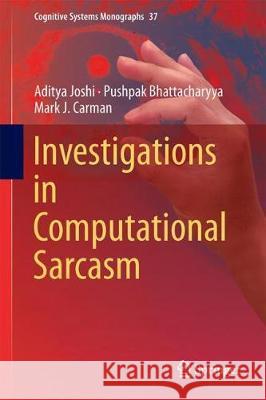Investigations in Computational Sarcasm » książka
topmenu
Investigations in Computational Sarcasm
ISBN-13: 9789811083952 / Angielski / Twarda / 2018 / 143 str.
Kategorie:
Kategorie BISAC:
Wydawca:
Springer
Seria wydawnicza:
Język:
Angielski
ISBN-13:
9789811083952
Rok wydania:
2018
Wydanie:
2018
Numer serii:
000374617
Ilość stron:
143
Waga:
0.41 kg
Wymiary:
23.98 x 16.38 x 1.52
Oprawa:
Twarda
Wolumenów:
01











